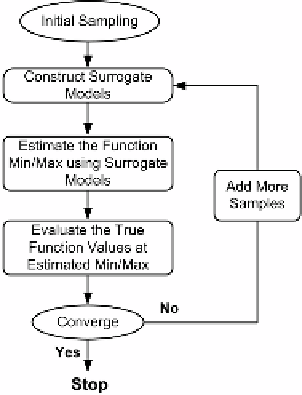Information Technology Reference
In-Depth Information
reduce computational cost is to use the performance surrogate models proposed in
Section 2. As performance models are constructed as a function of selected design
parameters and parametric variations, they can be used instead of using circuit-level
simulations. Therefore, yield estimation can be achieved without large computational
cost.
One application of a variation-aware performance model is to obtain the yield-
aware Pareto fronts [23] which is best trade-offs of the overall circuit performance
and yield. In this application, in addition to searching for the general Pareto-optimal
designs, performance yield at those design points is evaluated by using the variation-
aware performance model. As a result, the yield-aware Pareto fronts can be generated.
An illustration is shown in Fig. 12. P
1
and P
2
are the performance parameters to trade-
off, and the curves are the Pareto fronts with different yield levels. The yield-aware
Pareto fronts of sub-blocks could be further used in yield-aware system design.
5.2
Surrogate-Based Circuit Optimization
Simulation-based circuit optimization is a very good application of surrogate
modeling, as the process requires a great number of iterative evaluations of objective
functions. In an optimization process, surrogate models are used to guide the search
instead of achieving the global accuracy.
In the surrogate-based optimization process, generally there are two types of simu-
lation models, a low-fidelity and a high-fidelity model. In our circuit design problems,
the transistor-level circuit simulation is used as a high-fidelity model while the built
surrogate model is used as the low-fidelity model. The general surrogate-based opti-
mization process is shown in Fig. 13 [24].
Fig. 13.
General surrogate-based optimization flow

Search WWH ::

Custom Search